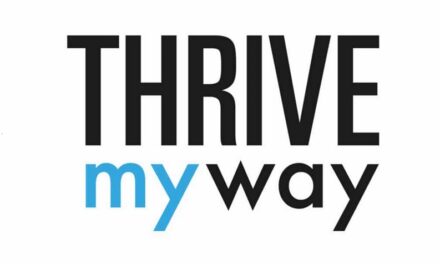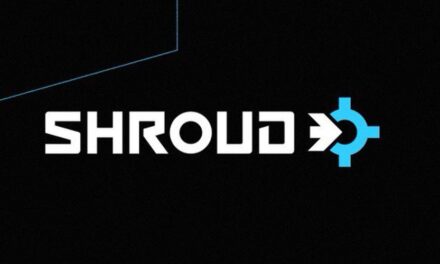If you are immersed in the marketing world, you may have heard the phrases “big data,” “predictive analytics,” and “microtargeting” tossed around. As we all know, knowing a buzzword doesn’t necessarily mean you truly understand the concept. So, let’s break down the concept of predictive analytics a little further and explore how it applies to marketing.
Predictive analytics and statistical analysis are based on the concept of relationships between observed actions or occurrences and future actions or occurrences. You choose a dependent variable based on observed data of what you want to predict and use a software program like Azure Machine Learning, SAS, or Alpine to compare that variable to other variables that may be related at various levels of statistical likelihood.
With regard to analyzing people, you look at a small sample of data on people who have bought your product-or taken whatever action it is you want more people to take-and build a predictive model to identify a number of shared traits they have. These traits can be income, region, marital status, or number of children. Additional variables may be as broad as interest in winter sports, creative writing, software magazines, or anything uniquely tied to this group of people. In some cases, you may have some of this data in-house, such as purchase records and survey responses. In the case of consumer and demographic data, you likely need to purchase this data from one or more vendors who specialize in collecting, organizing, and selling massive lists of data.
Within the umbrella of predictive analytics-finding relationships among variables to identify what traits your target audience share-is the idea of microtargeting. This allows you to not only identify the right people, but then to take the set of traits you found statistically significant, and create a subset of people who have those same traits. This group of people is then recognized to have traits that make them most likely to be receptive to your campaign. This is because we analyzed a small sample of people who had already taken some action that demonstrated they were open to buying our product. Think of it like this: “Who are my existing customers? What do they have in common? Which other people have the same traits as these existing customers, and therefore, represent opportunities for me to expand my customer base?”
This type of extremely targeted marketing is expected to grow over the next few years. According to David Raab, principal analyst for Raab Associates, 2015 was the year when predictive analytics in the marketing sector took off, with at least $242 million in new funding for startups that pioneer this technology, compared with $376 million in all prior years combined. Companies will continue to refine their predictive analytics capabilities to ensure they’re reaching the right people with the right message, and using funds effectively. By understanding and embracing the principles behind predictive analytics now, you can apply these concepts and strategies to your current marketing, sales, or content creation efforts in various ways, depending on your needs and your budget.
Now let’s dig into how you can combine the power of predictive analytics and micro targeting to predict purchasing behavior and design a campaign to expand your customer base:
- Begin with the process of creating your dataset. Let’s say we need a dataset on people who have initiated the licensing for a certain cloud storage solution. With a clearly defined set of goals, you can develop this dataset with a number of powerful analytics tools and statistical techniques, ranging from predictive modeling to machine learning and data mining. Datasets can be bought from companies that specialize in selling certain data to include in your chosen analytics database. It’s important to point out there are myriad reasons it’s critical to understand the source of your data. This includes privacy policies, how often sources are updated, and investing in quality data that will be useful in the analysis process.
- Once we have a dataset loaded, we want to analyze the people who have purchased the cloud solution and find what they have in common with one another. This allows us to build a model to target others with traits similar to those who have already shown interest in our cloud solution. This saves money and time by targeting people who are likely to respond positively.
- To do this, our first step is to create a dependent variable. The aim is to create a segmentation of data into groups to analyze in a predictive model. We can use SQL to do this. SQL is a database command language that pulls out specific segments. So, we create a variable that pulls out everyone who has purchased the cloud solution in the past five years and has maintained their license and call it “Cloud Purchase.”
- Then, we build a predictive model which takes that variable containing cloud purchase information, and compares it to other variables in our dataset. Examples of variables we may want to compare it to might be country of residence, state, zip code, gender, marital status, and type of employer. This statistical process for determining the strength of a relationship between one dependent variable and a series of other changing variables is known as regression modeling.
- The regression model we build then compares our Cloud Purchase variable to whichever other variables we choose to include in the analysis, and then gives us statistical correlations for each variable. Maybe our Cloud Purchase variable is correlated at > .8 (80%) of those who own homes, make over $200,000 a year, live in urban areas, have children, and work for a multinational corporation. The regression gives us scores for the entire model, as well as scores for individual variables, so we can remove those with low correlations to the target variable. It also gives us a predicted accuracy score, telling us how likely its predictions are to be true. This score depends on the quality and quantity of the entire dataset we used and the SQL logic we created in our variable.
- Once we are armed with a list of demographic, consumer, or other variables of people who initiate the cloud solution licensing are likely to have, we can identify more people who fit this demographic. If we own a dataset with contact information or IP addresses match, we can use the regression model we created to build a likelihood score that will be tied to every person in our dataset. The score will allow us to determine whom we should target our ads to on their likelihood to buy cloud services, based on our analysis of people who already have.
Having a data-based justification for whom to target can save a lot of money and guesswork. Also through targeting people who are statistically much more likely to buy your cloud solution, attend your webcast, or agree to be contacted can offer valuable insights for organizations.
Predictive analytics is, at its core, an art and a science, melding the fields of data science, statistical analysis, and software development, in order to form correlations between observed behavior or occurrences, and future behaviors or occurrences. Working side-by-side, marketers and data scientists can create better, cheaper, and higher-return campaigns, bypassing guesswork and one-size-fits all approaches in favor of demonstrated probability.






